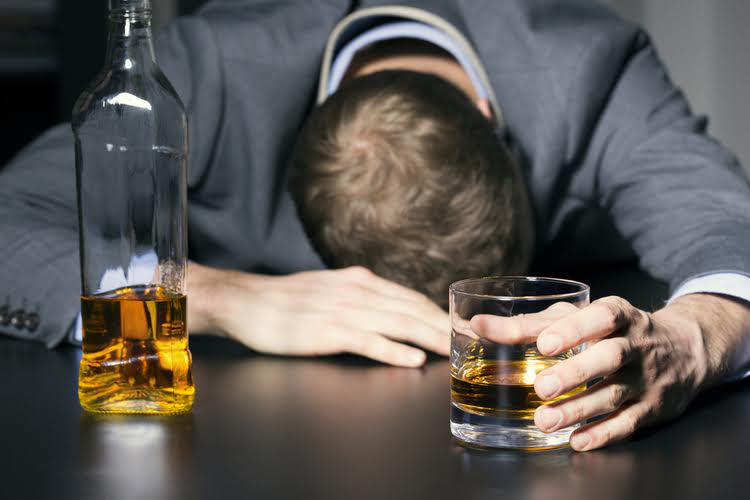The excitement stage, with a BAC ranging from 0.09% to 0.25%, is marked by noticeable changes in in which stage of intoxication does an individual become aggressive behavior and physical capabilities. Individuals may exhibit slurred speech, staggering gait, and impaired coordination. Emotional responses can become exaggerated, leading to mood swings, and reaction times are significantly slowed. At this stage, the risk of alcohol-related accidents and poor judgment increases substantially.
When is Alcohol Intoxication a Sign of Alcoholism?
People in this stage of intoxication are very likely to forget things happening around or to them. They might “black out” without actually losing consciousness and Sobriety may not be able to feel pain. Medical care professionals treating patients for alcohol poisoning should check for possible Alcohol Use Disorder (AUD). Partial hospitalization programs (PHPs) provide similar services to inpatient programs.
Stages of Drunkenness There Are Seven Stages of Alcohol Intoxication
- Their movements are even more impaired as they become more prone to dizziness and falls.
- As alcohol is consumed, it can lead to a range of cognitive impairments, including decreased attention, memory, and reaction time, as well as increased impulsivity and risk-taking behavior.
- Reaching the Stupor Stage can be very dangerous and even fatal for a person.
- Studies with animal models have helped delineate how alcohol affects aggression and the mechanisms that induce these changes.
- It’s essential to be aware of these stages, as they can help gauge how intoxicated you or someone else may be.
- These impairments can lead to poor decision-making, including engaging in risky behaviors, such as driving or operating heavy machinery, and increased susceptibility to accidents and injuries.
These effects typically start to occur when alcohol reaches a certain percentage of a person’s bloodstream, known as their blood alcohol content (BAC). You’ll live in safe, substance-free housing and have access https://deshmorchanews.com/goodbye-letter-to-addiction-template-download/ to professional medical monitoring. Knowing the 5 Stages of Intoxication can help alcohol servers and bartenders count drinks and effectively observe customer behavior. We offer a holistic approach to treatment with a focus on your individual needs.
Excitement (0.09 – 0.25% BAC)

The rate at which the liver can metabolize alcohol is relatively constant, regardless of the amount consumed, which is why drinking more alcohol than the body can process leads to intoxication. As a bartender or alcohol server, it’s your responsibility to stop service once you suspect that someone is over their limit. Studies with animal models have helped delineate how alcohol affects aggression and the mechanisms that induce these changes. This study showed that these effects are not universal, but that wide differences exist between individuals in the effects of alcohol on aggression.
Understanding the 5 stages of intoxication
If it isn’t resolved, the addiction might cause damaged relationships, a poor career, and poor health. Swallowing everything, including their vomit, could result in death. This stage is not generally calculated because there is no proof that there is enough alcohol in the bloodstream to have noticeable effects. In terms of quantity, it doesn’t take much to begin experiencing the repercussions of intoxication.
The Seven Stages of Intoxication
Individuals may feel a slight sense of relaxation or reduced inhibition but are generally able to function normally. Decision-making skills and reaction times may be slightly impaired, but these effects are subtle and may not be noticeable to the individual or others. When a person has had quite a bit to drink, they may experience lapses in judgment or heightened emotional intensity. We base differences on several things, like genetics, body weight, frequency of intoxication, overall general health, and more. Of course, Sober living house the severity of a person’s symptoms will depend on how much they have had to drink. Learn the typical Blood Alcohol Concentration (BAC) per number of drinks someone has had, and the common behavioral and physical signs for each stage of intoxication.
My Programs
If you believe someone is significantly intoxicated, the first thing to do is to remove any additional alcohol from their immediate surroundings so they can’t continue to drink. If you are concerned about someone with these symptoms, you should seek immediate medical attention. Get all the tools you need to understand how alcohol affects the body, along with alcohol safety best practices and tips, when you take Userve’s Alcohol Server / Seller Training.

The final stage of intoxication is characterized by a BAC of 0.25% or higher and is marked by near-total impairment. Individuals may appear unresponsive or unconscious, with severely impaired motor skills and altered mental status. At this stage, the risk of alcohol poisoning is high, which can be life-threatening if not addressed promptly. Behavioral Signs When a person reaches the Intoxication Stage, their level of alertness has decreased.
This is a zombie-like stage of intoxication, and there’s the chance of experiencing alcohol poisoning, coma, or death. Understanding the five stages of intoxication is crucial for promoting safe drinking practices and recognizing when an individual may be at risk due to alcohol consumption. It’s essential for drinkers to be aware of their limits and for those around them to recognize the signs of intoxication to prevent accidents and ensure safety.
- The narcissism we all have that you may successfully keep at bay in your daily life may take over a bit now as you may want to prove you’re the smartest person in the room.
- You will probably not show signs of intoxication by observation alone.
The state of intoxication from alcohol is commonly known as being drunk. For people with more severe alcohol use, particularly those who have coexisting medical and mental health disorders, a detoxification and rehabilitation program may be recommended. Tests may include blood tests to determine the amount of alcohol in the blood and the blood sugar level, urine tests for certain toxic substances, and computed tomography (CT) of the head. Alcohol intoxication, also known as drunkenness, is a condition that occurs when an individual consumes alcohol in amounts that exceed their body’s ability to metabolize it efficiently. The consumption of alcohol is a widespread practice across many cultures, often used for social, ceremonial, or recreational purposes. However, understanding the effects of alcohol on the body is crucial for safe and responsible drinking.



